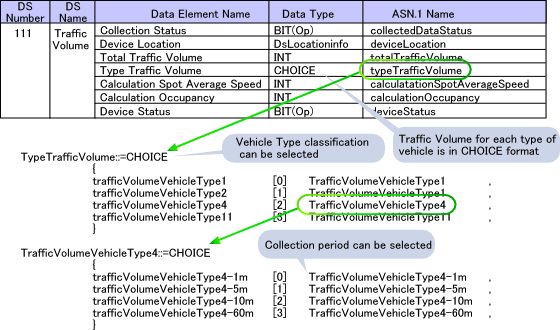the Road Communication Standard
| ■the Data Dictionary | |
| ■the Massage Set | |
| ▼Composition of the MS | |
| ▼Feature of the MS | |
| ▼Rerationship | |
| ■Overview of the Protocol | |
Features of Message Set Standard
>
There are three main features of this standard.
First, the function placement differs from conventional message sets.
In the conventional message sets, the data processing or judgment functions were allocated in the central offices.
In the RCS concept, such functions are distributed to the roadside equipment, reducing the center's load, and thereby making the elimination of the central system possible.
As for the roadside equipment, the standardization of input messages about the data processing and judgment functions will realize the multi-vendor environment. The equipment cost reduction is expected in such a competitive market.

<Conventional Model>

<Standard Model>
The second feature is the universality and expandability. In the conventional message sets, as shown in the following figure, different message sets must be defined if there is only a small difference in their messages. In the RCS, however, data set concept is defined in the message set, and it solves this issue. As shown in the following example figure, a data set chosen from the possible alternatives (DS1,DS2 and DS3) can be allocated in a slot of the message set. Then, if there are two similar messages with a small difference, the same message set can be employed using different data set in the same slot. The incorporation of data set into message set achieves the universality of message set.
In addition, the expandability of message set is obtained through the future addition of new data sets.

<Conventional Model: Even if there is only a small difference between message D and E, different message sets should be defined>

<Standardized Model: The same message set can be used to carry message D or E by assigning DS number, where the DS number has a one-to-one correspondence with the message (D or E).>
The third feature is the flexibility to cope with different system requirements. Regarding the traffic volume data by vehicle type, some road managemant systems use two vehicle types data and others use four vehicle types data. The message for the two vehicle type data used to be different from that for four vehicle type data. In the RCS, however, the same message set can represent both data by using CHOICE format as shown below.
